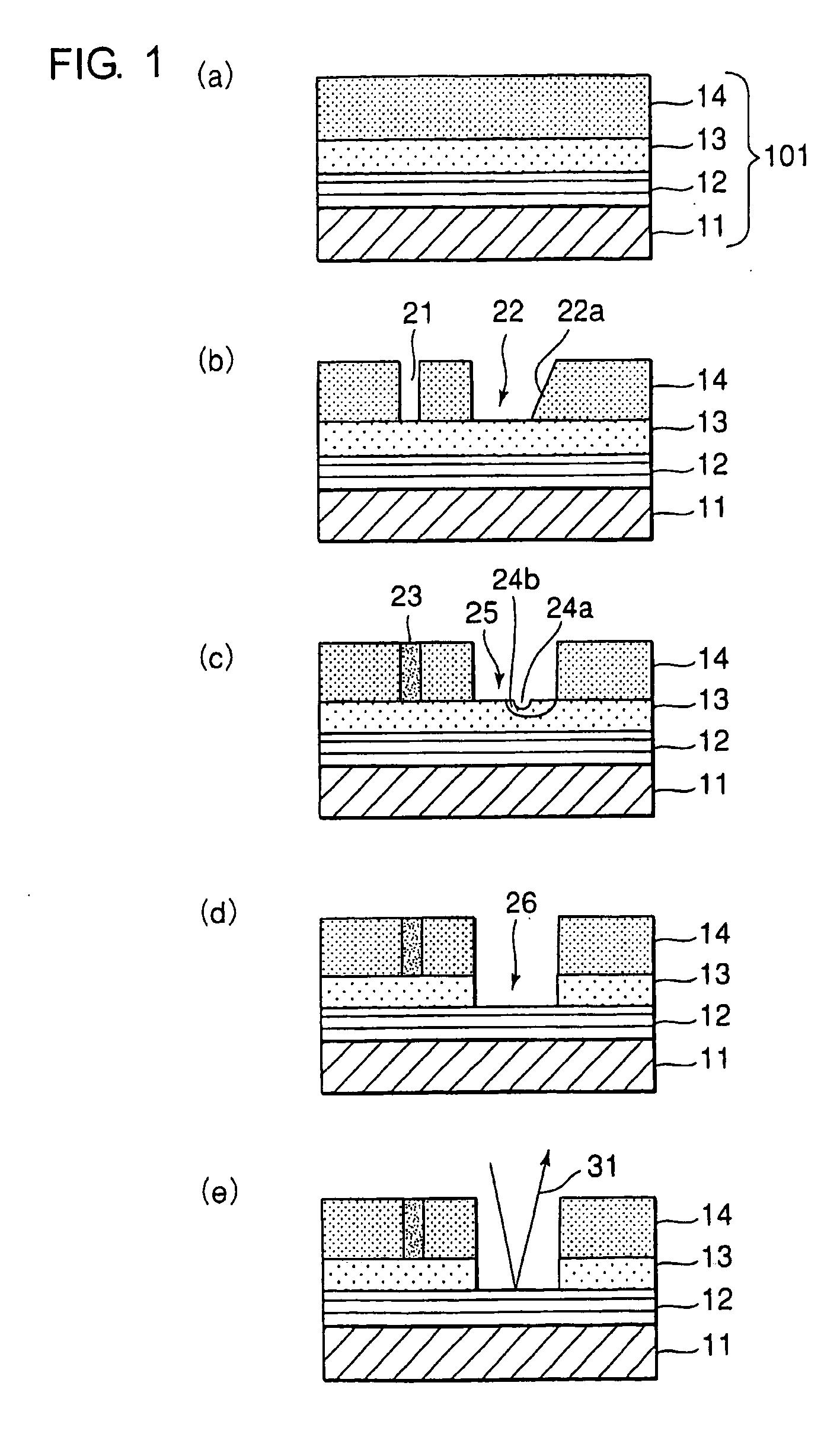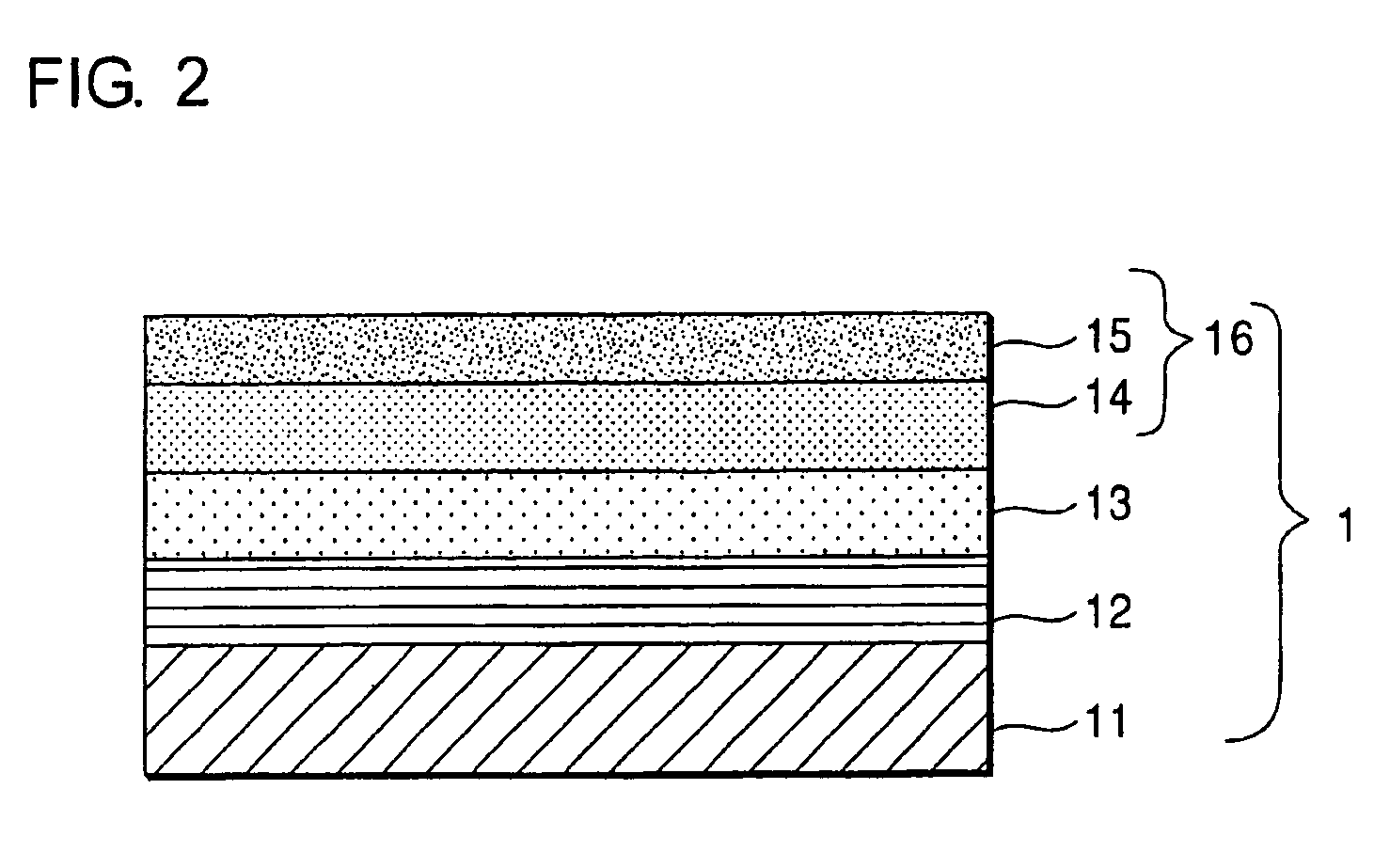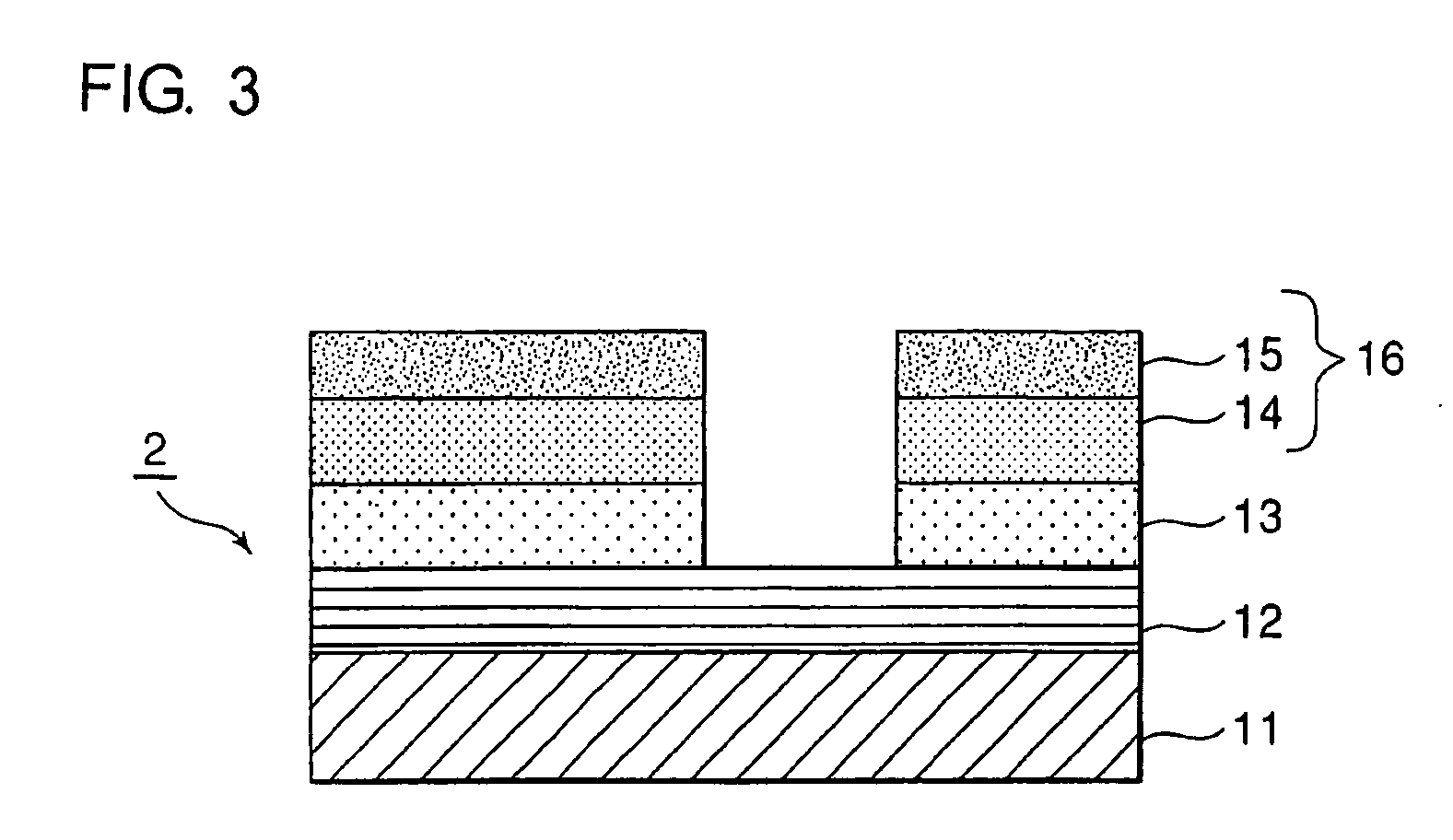Reflection type mask blank and reflection type mask and production methods for them
a reflection mask and mask blank technology, applied in the field of reflection masks and reflective mask blanks, can solve the problems of insufficient contrast upon inspection, insufficient detection of pattern defects, inaccurate inspection of defects, etc., and achieve the effect of accurate and rapid inspection
- Summary
- Abstract
- Description
- Claims
- Application Information
AI Technical Summary
Benefits of technology
Problems solved by technology
Method used
Image
Examples
first embodiment
[0062] Now, a first embodiment of this invention will be described in detail with reference to the drawing.
[0063]FIG. 2 is a schematic sectional view of a mask blank according to the first embodiment of this invention and FIG. 3 is a schematic sectional view of a reflective mask formed by using the mask blank in FIG. 2.
[0064] The mask blank according to the first embodiment of this invention has a structure illustrated in FIG. 2. Specifically, the mask blank 1 comprises a substrate 11 on which a reflective layer 12 for reflecting exposure light in a short-wavelength region including an EUV region, a buffer layer 13 for protecting the reflective layer 12 during formation of a mask pattern, and an absorber layer 16 for absorbing the exposure light are successively formed. In this embodiment, the absorber layer 16 has a two-layer structure comprising as a lower layer an exposure light absorbing layer 14 formed by an absorber for the exposure light in the short-wavelength region inclu...
example 1-1
[0143] The respective layers were deposited on the substrate 11 to produce a mask blank. Herein, a low-expansion SiO2—TiO2 glass substrate having an outer dimension of 6 inch square and a thickness of 6.3 mm was used as the substrate 11. The glass substrate was subjected to mechanical polishing to have a smooth surface of 0.12 nmRms (Rms: root mean square roughness) and a flatness of 100 nm or less.
[0144] At first, on the substrate 11, a Mo / Si laminate film of molybdenum (Mo) and silicon (Si) was deposited by DC magnetron sputtering as the EUV light reflective layer 12. At first, using a Si target, a Si film was deposited to 4.2 nm under an Ar gas pressure of 0.1 Pa. Then, using a Mo target, a Mo film was deposited to 2.8 nm under an Ar gas pressure of 0.1 Pa. Defining the above-mentioned deposition as one period, 40 periods of deposition was carried out. Finally, a Si film was deposited to 7 nm. The total thickness was 287 nm. The multilayer reflective film thus obtained had a ref...
example 1-2
[0163] In the manner similar to Example 1-1, a Mo / Si laminate film of molybdenum (Mo) and silicon (Si) was deposited on the substrate 11 as the EUV light reflective layer 12. On the reflective layer, a SiO2 thin film was deposited to a thickness of 50 nm as the buffer layer 13.
[0164] On the buffer layer, a tantalum (Ta) thin film was formed to a thickness of 50 nm as the exposure light absorbing layer (comprising the EUV light absorber) 14. Specifically, using a Ta target, deposition was carried out by DC magnetron reactive sputtering using an argon gas.
[0165] On the exposure light absorbing layer, a TaO thin film was deposited to a thickness of 10 nm as the low-reflectivity layer 15 for the inspection light having a wavelength of 257 nm. Specifically, using the same Ta target and in the same deposition chamber as those in the formation of the lower layer of Ta, deposition was carried out by DC magnetron reactive sputtering using a mixed gas of argon and oxygen. The film had a com...
PUM
| Property | Measurement | Unit |
|---|---|---|
| reflectivity | aaaaa | aaaaa |
| thickness | aaaaa | aaaaa |
| wavelength | aaaaa | aaaaa |
Abstract
Description
Claims
Application Information
 Login to View More
Login to View More - R&D
- Intellectual Property
- Life Sciences
- Materials
- Tech Scout
- Unparalleled Data Quality
- Higher Quality Content
- 60% Fewer Hallucinations
Browse by: Latest US Patents, China's latest patents, Technical Efficacy Thesaurus, Application Domain, Technology Topic, Popular Technical Reports.
© 2025 PatSnap. All rights reserved.Legal|Privacy policy|Modern Slavery Act Transparency Statement|Sitemap|About US| Contact US: help@patsnap.com



